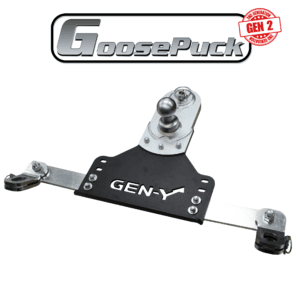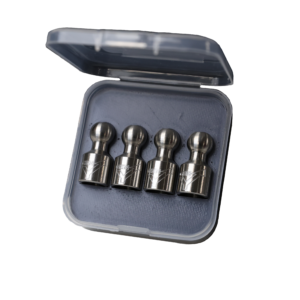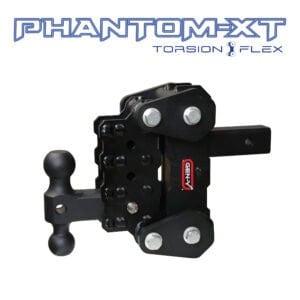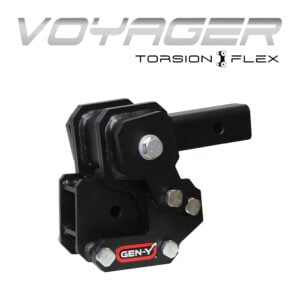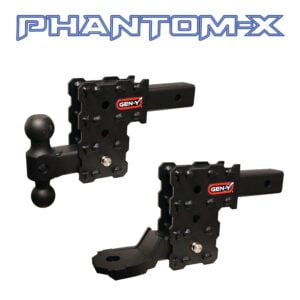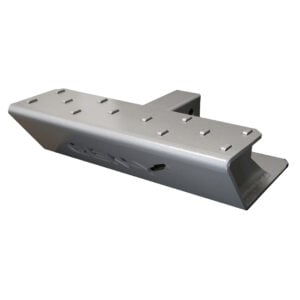Towing in high winds presents significant challenges even for experienced drivers. That said, there are some things you should keep in mind going into it! Here’s everything you need to know about towing in high winds!
Understanding the Effects of High Winds on Towing
When you’re towing, high winds are more than just an inconvenience. They can be dangerous. Crosswinds are the most challenging because they push the side of your trailer, which acts like a sail, making it more difficult to control. Even a slight gust can cause your trailer to sway and shift lanes if you’re not careful. Strong headwinds and tailwinds, on the other hand, can impact your vehicle’s fuel efficiency and cause sudden speed changes.
What precautions should be taken for high winds?
When towing in high winds, follow these essential precautions to stay safe:
-
Reduce Your Speed
Slower speeds mean more control. Speed amplifies the effects of wind gusts, making it harder to correct sway. Keep your speed at a manageable level to improve stability and reaction time.
-
Balance Your Load
A well-balanced load can drastically reduce the impact of high winds on your trailer. Ensure your cargo is evenly distributed, with heavier items over the axles. An unbalanced trailer is far more likely to sway in windy conditions.
-
Check Tire Pressure
Proper tire pressure on both your vehicle and trailer is crucial when towing in windy conditions. Underinflated tires reduce traction and increase sway, while overinflated tires can make your ride bumpier and more challenging to control.
-
Use Trailer Sway Bars
A sway control bar is an invaluable tool for high-wind towing. It helps stabilize your trailer by resisting sway when wind gusts hit, giving you more control over your rig. Properly adjusted sway bars can make a massive difference in windy conditions, making your tow much safer.
-
Avoid Large Gaps Between Vehicles
When traveling behind large vehicles like trucks or buses, maintain a safe following distance but avoid large open gaps on windy highways. Passing trucks can shield you from crosswinds, while sudden gusts from the side can destabilize your trailer if there’s too much space.
-
Secure Your Cargo Properly
Loose cargo can become a hazard in windy conditions. Before setting out, ensure that all items inside and on your trailer are securely fastened. If you have gear strapped to the outside, like bikes or luggage, double-check that everything is tightly secured to prevent wind from catching and loosening it.
Using ratchet straps and cargo nets for items carried on roof racks or open trailers can provide extra security. Tightly securing cargo will also help maintain balance, preventing sudden shifts that could cause sway.
-
Avoid Exposed and Open Areas
When towing in high winds, it’s best to plan your route with wind exposure in mind. Open areas such as flat plains or elevated roads are more vulnerable to strong wind gusts while driving through urban areas or along tree-lined highways can help shield you from the worst effects of the wind. If possible, choose routes with natural wind barriers like hills, forests, or buildings.
Additionally, be cautious when crossing bridges, where wind gusts can be even more intense due to their elevated position. If conditions become too severe, it’s safer to pull over and wait for the winds to calm down than to risk crossing exposed areas.
-
Know When to Pull Over
Sometimes, the wind can be so strong that it becomes dangerous to continue towing. If you feel your trailer is swaying uncontrollably, or if steering becomes difficult, find a safe place to pull over. Rest stops, parking lots, or sheltered areas are ideal for waiting out severe wind conditions. If you’re on the side of the road, ensure your vehicle is well off the highway and turn on your hazard lights to alert other drivers.
-
Use a Weight Distribution Hitch
For larger trailers, a weight distribution hitch is highly recommended when towing in high winds. This type of hitch helps distribute the trailer’s weight more evenly across your tow vehicle’s axles, improving traction and reducing the likelihood of sway. A weight distribution hitch can also help level your trailer, making it more stable and less likely to catch the wind. This added stability can make a huge difference when towing in gusty conditions.
Towing in high winds requires preparation, caution, and the right equipment. By slowing down, securing your load, using sway control bars, and knowing when to pull over, you can make towing in windy conditions much safer. Additionally, a weight distribution hitch can provide extra stability for larger trailers, ensuring your trip remains safe, even when the weather is less than ideal. Keep these best practices in mind, and you’ll be better equipped to handle whatever Mother Nature throws your way.
Let Us Help!
Gen-Y Hitch exists to better the lives of our customers, dealers, vendors, employees, and the automotive industry. We will always put our customers’ needs ahead of our own. Contact us today, and let us help you!



